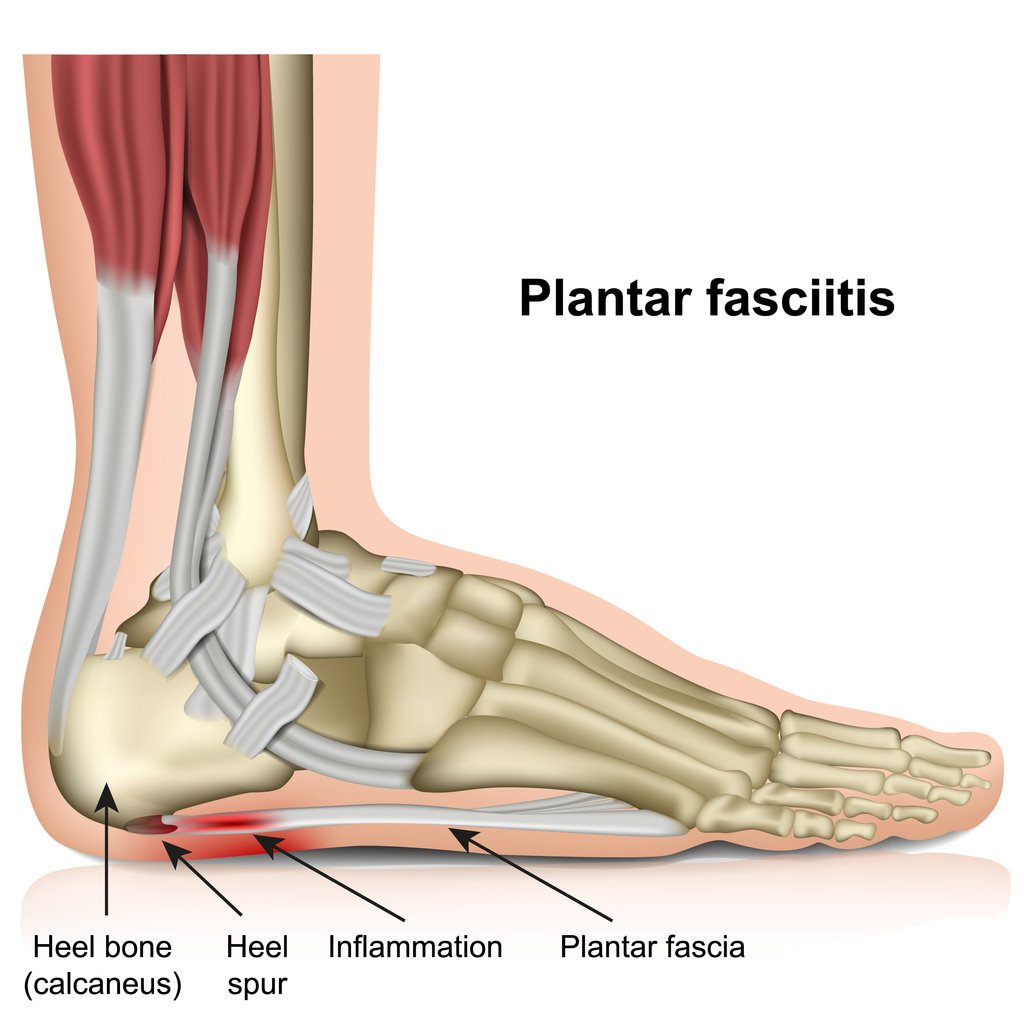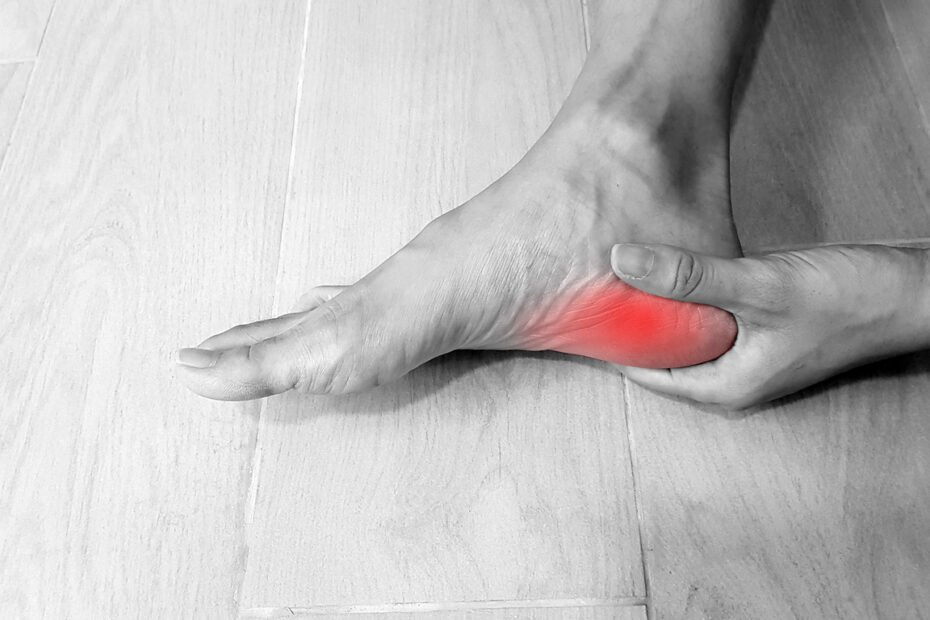Plantar Fasciitis is a common ailment that affects millions of people worldwide. It can cause intense pain and discomfort, making it difficult to walk or stand for long periods. But what exactly is Plantar Fasciitis and what is the cure for Plantar Fasciitis? In this blog post, we will explore the anatomy of the foot, the causes behind Plantar Fasciitis, and how to identify its symptoms. We will also discuss the importance of professional diagnosis and curative measures, including non-surgical treatment methods and when surgery is necessary. Additionally, we will provide tips on prevention and home remedies for relief. Lastly, we will address common questions such as how long it takes for Plantar Fasciitis to heal and if a podiatrist can help with the pain. Read on to learn everything you need to know about this condition.
Understanding Plantar Fasciitis
Plantar fasciitis is a common foot condition that causes heel pain. It occurs when the plantar fascia, the tissue connecting the heel bone to the toes, becomes inflamed and irritated. Factors such as high arches, flat feet, and tight calf muscles can contribute to its development. Overuse, excessive walking, and running on hard surfaces can also lead to plantar fasciitis. Rest, ice, and stretching exercises are simple treatment methods that can help alleviate the symptoms of this condition. By understanding the causes and symptoms of plantar fasciitis, individuals can take steps to manage and prevent this chronic pain in the bottom of the heel.
Anatomy of the Foot and How it is Affected
The plantar fascia is a crucial structure located on the bottom of the foot that provides support to the arches. When this band of tissue becomes strained or injured, it can result in heel pain, known as plantar fasciitis. The achilles tendon, calf muscles, and arch of the foot are all interconnected, and any issues with these areas can affect the symptoms of plantar fasciitis. Understanding the anatomy of the foot is essential in effectively treating this condition. The use of proper arch support and shoe inserts can provide much-needed relief from the pain caused by plantar fasciitis.

The Causes Behind Plantar Fasciitis
Plantar fasciitis can be caused by various factors, such as high arches, flat feet, and tight calf muscles. Overuse, excessive walking, and running on hard surfaces can contribute to its development. Wearing shoes with inadequate support or that don’t fit properly, including high heels, can also lead to plantar fasciitis. Other risk factors include obesity, age, and certain physical activities. Understanding these causes is crucial for prevention and treatment of this condition.
Highlighting the Risk Factors
Certain factors can increase the risk of developing plantar fasciitis. Individuals with high arches or flat feet are more prone to this condition. Tight calf muscles or the Achilles tendon can also contribute to the risk. Activities that involve repetitive stress on the feet, such as running or standing for long periods, can further exacerbate the chances. Additionally, obesity and age can increase the likelihood of developing plantar fasciitis. Being aware of these risk factors enables individuals to take preventive measures and seek treatment early, minimizing the impact of this painful condition. If you pay attention to these risk factors and take swift action then you can cure plantar fasciitis fairly quickly.
Identifying Symptoms of Plantar Fasciitis
One of the most common symptoms of plantar fasciitis is experiencing heel pain, particularly in the morning or after long periods of rest. Typically, the pain is localized at the bottom of the heel but can also extend along the arch of the foot. It tends to worsen with activities such as walking, running, or standing for extended periods. Some individuals may also notice swelling, redness, or tenderness in the affected area. Recognizing these symptoms is crucial for prompt treatment and effective pain management.
Importance of Professional Diagnosis in Order to Cure Plantar Fasciitis
Seeking professional diagnosis is crucial for accurately identifying plantar fasciitis and ruling out other foot conditions. A doctor will conduct a thorough physical examination, assess the symptoms experienced by the individual, and review their medical history. Diagnostic tests, including X-rays, may be ordered to confirm the diagnosis and eliminate other possible causes of heel pain. By seeking professional diagnosis, individuals can ensure the development of an appropriate treatment plan tailored to their specific needs. Avoiding self-diagnosis is important to prevent delays in treatment and potential worsening of symptoms.

Role of Doctor Examination in Diagnosis
During the diagnosis of plantar fasciitis, a doctor plays a crucial role in assessing and evaluating the condition. They conduct a comprehensive physical examination of the foot, paying attention to areas of pain, tenderness, and swelling. The range of motion, muscle strength, and arch support of the foot are also evaluated. Additionally, the doctor gathers information about the individual’s symptoms, medical history, and physical activities. This thorough examination helps the doctor to make an accurate diagnosis of plantar fasciitis, enabling them to develop a customized treatment plan. Seeking a doctor’s examination is essential for proper diagnosis and effective treatment.
Tests Used for Detection: X-rays and Beyond
X-rays are commonly used in the detection of plantar fasciitis to identify bone spurs, fractures, or other foot conditions that may be causing heel pain. Ultrasound imaging provides a detailed view of the plantar fascia, helping confirm the diagnosis. In complex cases, magnetic resonance imaging (MRI) can assess tissue damage. Additionally, blood tests may be ordered to rule out other underlying conditions. Utilizing various diagnostic tests allows for a comprehensive assessment of plantar fasciitis and ensures the development of an effective treatment plan.
Curative Measures for Plantar Fasciitis
Non-surgical treatment methods are the key to relieving plantar fasciitis symptoms and promoting healing. Rest, ice, and physical therapy can effectively reduce pain, inflammation, and muscle tightness associated with foot pain. Stretching exercises, night splints, and shoe inserts provide good arch support, alleviate symptoms, and aid in the healing process. In severe or chronic cases, custom orthotics, cortisone injections, or shock wave therapy may be recommended. Following a treatment plan tailored to your needs can lead to successful recovery from the most common symptoms of plantar fasciitis.
Non-surgical Treatment Methods Can Help Cure Plantar Fasciitis
Resting the foot and allowing the injured tissue to heal is vital for treating plantar fasciitis. Avoiding high-impact activities can prevent further damage. Ice therapy, using an ice pack, helps reduce pain, inflammation, and swelling. Stretching exercises, like calf stretches and plantar fascia stretches, improve flexibility and alleviate symptoms. Night splints, shoe inserts, and supportive shoes provide extra support and relieve pain. Physical therapy, including ultrasound therapy and foot strengthening exercises, aids in healing. Incorporating these simple treatment methods can effectively manage plantar fasciitis without surgery.

The Surgical Route: When is it Necessary?
When other treatment options have failed, surgery for plantar fasciitis may be considered. A foot specialist will assess the severity of your symptoms and the impact on your daily life to determine if surgical intervention is necessary. Options can include plantar fascia release or heel spur removal, and recovery time varies. Physical therapy may also be recommended.
Exploring Other Treatment Options
Non-surgical treatment options for plantar fasciitis include physical therapy, orthotics, and night splints. Stretching exercises (see https://theheelgp.com/best-exercises-plantar-fasciitis-the-heel-gp-com/), ice therapy, and pain medication can also help alleviate symptoms. Shock wave therapy and cortisone injections are alternative treatment options. Discuss with your doctor the most suitable treatment plan for your specific condition. It’s important to follow the treatment plan consistently for the best chance of relief and curing plantar fasciitis. Remember to consult a physical therapist for expert guidance and consider using good arch support in your shoes to reduce stress on the plantar fascia.
Prevention Better than Cure? How to Avoid Plantar Fasciitis
Maintaining a healthy weight reduces foot stress, minimizing plantar fasciitis risk. Choose supportive shoes for physical activities. Incorporate foot exercises like toe curls, arch stretches, and calf raises into your routine. Gradually increase activity intensity to prevent overuse injuries. Avoid walking barefoot on hard surfaces, especially with flat feet or high arches.
Fitness and Diet Tips to Keep Plantar Fasciitis at Bay
Engage in low-impact exercises, such as swimming or cycling, to maintain your fitness level without straining your feet. To support the healing process and reduce inflammation, incorporate foods rich in anti-inflammatory properties, like fatty fish, berries, and leafy greens, into your diet. Stay hydrated to promote overall health and aid in the recovery of plantar fasciitis. Avoid high heels or shoes without proper arch support, as they can worsen symptoms. Always listen to your body and give your feet adequate rest, especially after physical activities.

Are Home Remedies Effective Against Plantar Fasciitis?
Home remedies can be effective in providing pain relief for plantar fasciitis. Techniques such as ice therapy, foot massages, and using night splints can help alleviate symptoms. Regular stretching of the plantar fascia and calf muscles, along with wearing supportive shoes and using heat therapy, can also aid in the healing process. Heel cups or shoe inserts provide additional support and cushioning.
Self-care Tips and Tricks for Relief
To find relief from plantar fasciitis, there are several self-care tips and tricks that you can try. Reduce inflammation and pain by rolling your foot over a small paper cup filled with ice. Massage the bottom of your foot using a tennis ball or frozen water bottle, targeting the plantar fascia. Alleviate tightness and pain through foot stretches like the toe stretch and calf stretch. Applying a pain-relieving gel or cream to the arch and heel can provide relief. Elevating your feet and using a foot roller or golf ball can also help relieve tension in the foot muscles.
How Long Does it Take for Plantar Fasciitis to Heal?
The healing timeline for plantar fasciitis varies, but most cases resolve within 6 to 12 months. Consistently following the treatment plan, including physical therapy and self-care, can speed up the healing process. Resting the feet, avoiding high-impact activities, and wearing supportive shoes are crucial for recovery.
Can a Podiatrist Help with Plantar Fasciitis Pain?
A podiatrist specialized in foot and ankle conditions, including plantar fasciitis. They offer accurate diagnosis and individualized treatment plans. Options may include custom orthotics or physical therapy. Regular check-ups help monitor progress and make adjustments to the treatment plan. Seeking professional help can provide targeted solutions for pain relief and ultimately help cure plantar fasciitis.

Conclusion – What is the Cure for Plantar Fasciitis?
In conclusion, plantar fasciitis is a common condition that can cause significant pain and discomfort. It is important to understand the causes and risk factors associated with this condition in order to prevent and treat it effectively. While non-surgical treatment methods are usually the first line of defense, surgery may be necessary in severe cases. Additionally, incorporating preventive measures such as maintaining a healthy lifestyle, wearing proper footwear, and practicing good foot care can help reduce the risk of developing plantar fasciitis. If you are experiencing persistent pain or have concerns about your condition, it is always recommended to consult with a podiatrist who can provide expert guidance and help alleviate your symptoms.
Although it is a painful and frustrating condition, plantar fasciitis can be cured, so don’t despair!
Want further information? Check these links out:
https://www.nhs.uk/conditions/plantar-fasciitis/ (UK)
https://www.mayoclinic.org/diseases-conditions/plantar-fasciitis/diagnosis-treatment/drc-20354851(USA)

I hope you find this article helpful. Please feel free to comment and/ or share.
Keep an eye out for future articles at theheelgp.com
Thanks for reading.
Tracy J.
